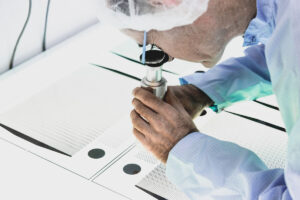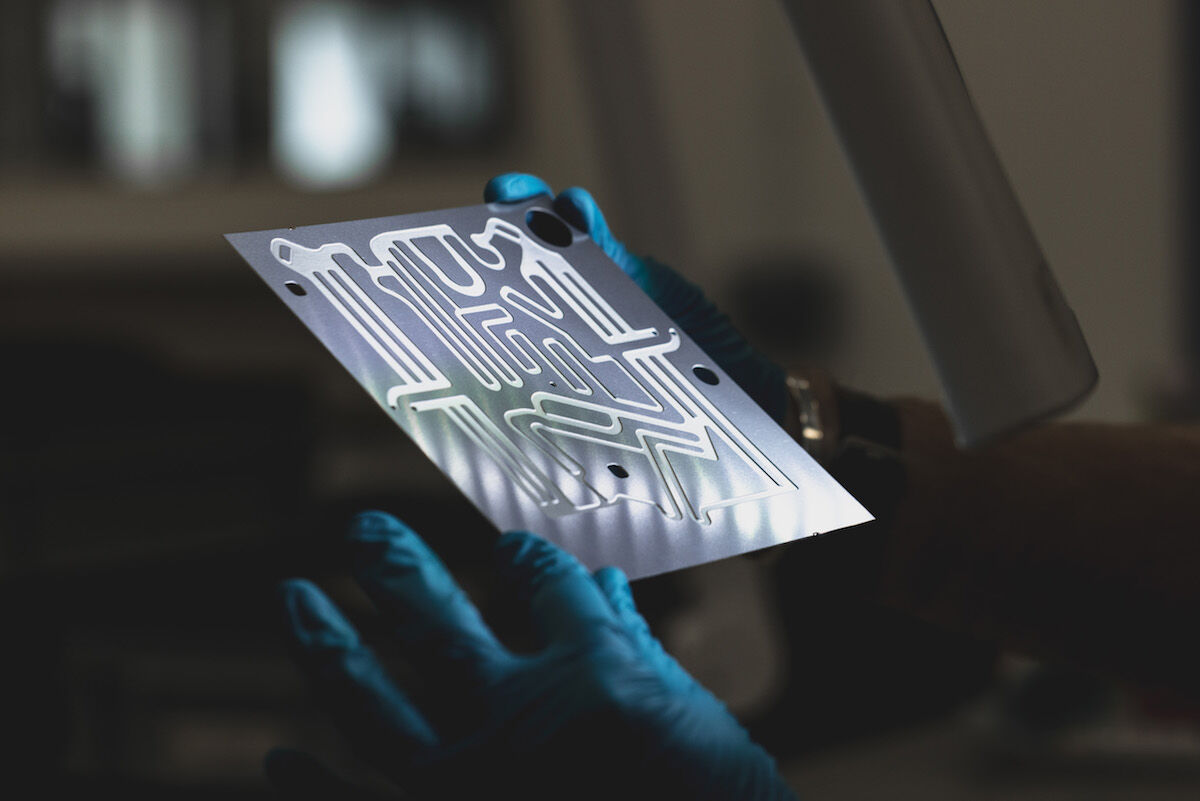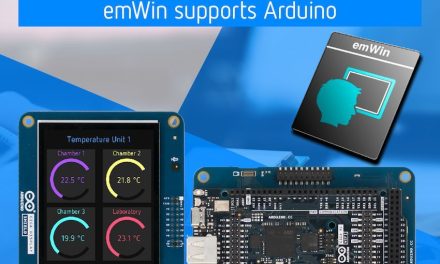Whether it’s water heaters or waste heat recovery, refrigeration or oil and gas production, heat exchangers are used across a wide range of applications. At their heart are a series of flat metal plates, each intricately machined with channels which facilitate the flow of different temperature fluids – and the transfer of heat between them. Through the process of photochemical etching, these components can benefit from greater operational efficiency and enhanced production times.
In traditional plate heat exchanger manufacturing processes, metal is often pressed to create the desired geometry and flow channels. The more complex the geometry, the more time-consuming and expensive the task, with the associated tooling costs and any remedial post-machining work to remove any material stresses or burrs.
Cutting through this complexity, the process of photochemical etching provides a reliable alternative to conventional processes. Here, Bonny van Geel from Precision Micro discusses why chemical etching should be the method of choice for heat exchanger design engineers.
Manufacturing the key components of plate heat exchangers
As plate heat exchangers play a vital role across almost every industry, there is a continuous drive to improve them and drive ever-greater levels of efficiency. This means reviewing the suitability of more traditional metal machining methods, such as CNC machining, stamping, punching, laser and waterjet cutting against alternatives like photochemical etching.
The unique characteristics of chemical etching overcome many of the issues associated with traditional metal cutting technologies – including mechanical and thermal stress. As well as maintaining material quality and delivering uncompromising consistency, the process offers a cost-effective solution for the manufacture of metal components which are required to be highly precise and consistent.
As such, chemical etching is a viable alternative to traditional metal machining methods, providing consistent repeatability, high-quality and cost-effectiveness when creating complex components.
How is photochemical etching different to other metal machining processes?
Photochemical etching is a subtractive sheet metal machining process that uses chemical etchants to create complex and highly accurate precision components from almost any metal. That includes hard-to-process metals such as aluminium and titanium, through to stainless steel. Unlike stamping or laser cutting, photochemical etching does not degrade the metal or affect its properties in any way, and no burrs are created in the process, eliminating the need for additional machining. The product is clean, precise, and the time to market is accelerated.
When it comes to plate heat exchangers, flow channels are created by removing metal using a subtractive chemical process. At the start of the process, the initial design is created digitally and then produced as a polymeric film stencil, which is used to transfer the CAD image onto metal laminated with a light-sensitive ‘photoresist’. Exposure to UV light transfers the image to the photoresist-clad metal, which is then developed to reveal the areas of metal which require etching. From there, the metal sheet is exposed to chemicals which precisely etch the desired component.
This unique process produces finer detail than is possible with traditional methods, and as the process subtracts metal rather than forces it into shape, burr-free and stress-free parts can be produced repeatedly to consistent levels of quality.
The unique etched components of plate heat exchangers benefit from reduced overall footprint, volume and weight, as well as an exceptionally high heat transfer efficiency-to-volume ratio. By removing metal simultaneously, the flow plates can be etched with a high degree of accuracy often to as little as ±0.020mm, allowing for efficient heat transfer over a smaller surface area.
The benefits of photochemical etching extend even further than the high quality of components produced. Compared with the set-up times and costs of conventional tooling, chemical etching uses digital tooling, an agile and cost-effective process that enables engineers to create designs with highly complex geometries. This saves time and money in the production process, allowing precision components to be delivered highly accurately time and time again. The prototyping phase is also enhanced, with the process of photochemical etching allowing engineers to experiment with different channel and flow patterns to ensure the optimal result for each application.

Printed circuit heat exchangers (PCHEs)
Precision Micro has been at the forefront of printed circuit heat exchanger manufacture since the 1990s, supplying etched and diffusion bonded PCHE flow plates for many internationally trusted brands. These precision-etched plates are capable of handling pressures up to 1,000 bar and temperatures ranging from deep cryogenic to 800oC+.
Once the plates are etched with the flow design, the stacked plates are brought together with solid-state diffusion bonding to create a solid heat exchanger core without gaskets. This uses heat (typically at 60% or above the metal’s melting point), together with pressure in a controlled atmosphere, to join the two metals. The result exactly mirrors the ductility and strength of the parent metal, ensuring safety is enhanced.
Resistant to freezing, corrosion and vibrations, the highly compact construction and close approach temperatures in a counter-flow configuration, enable a multi-stream capability in a single device. As the size and shape of the flow paths are maintained, the solid diffusion-bonded block can be subtractively engineered to create highly effective, bespoke heat exchangers.
Precision Micro is Europe’s leading photochemical etching specialist, producing plate and printed circuit heat exchangers for the world’s leading names. With plates produced quickly, cost-effectively, and to exacting quality, photochemical etching is the machining process of choice, from prototyping through to production.
Find out how photochemical etching can provide greater flexibility, cost, and time savings in the machining of plate heat exchangers in your industry. Download the application note at www.precisionmicro.com


